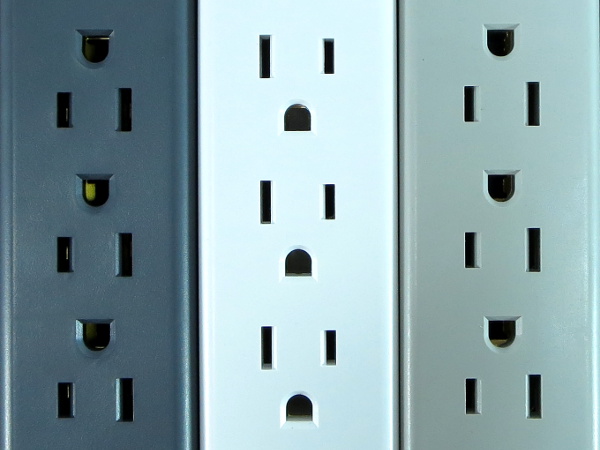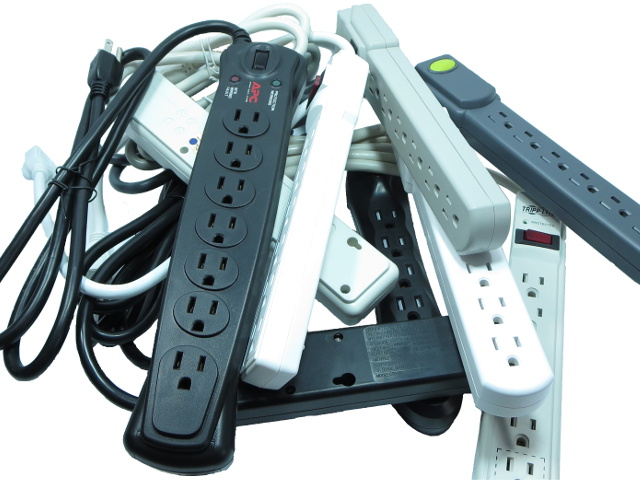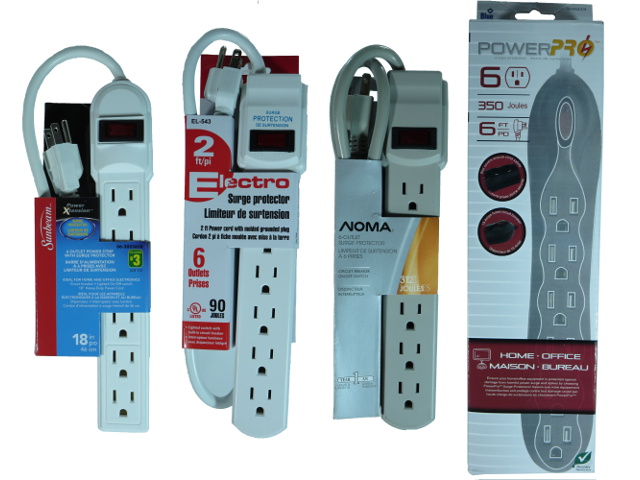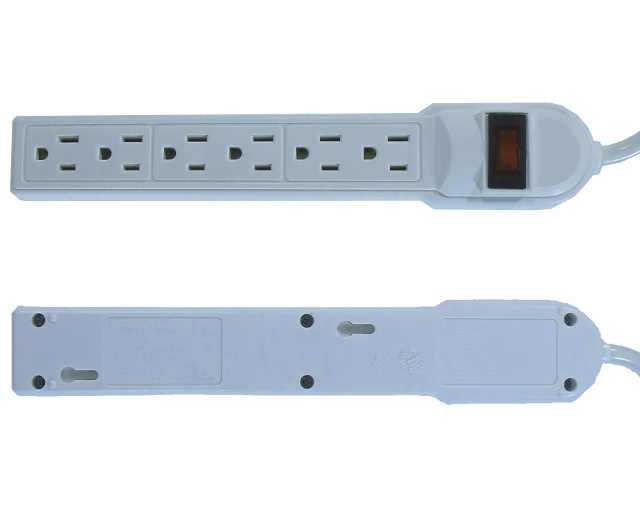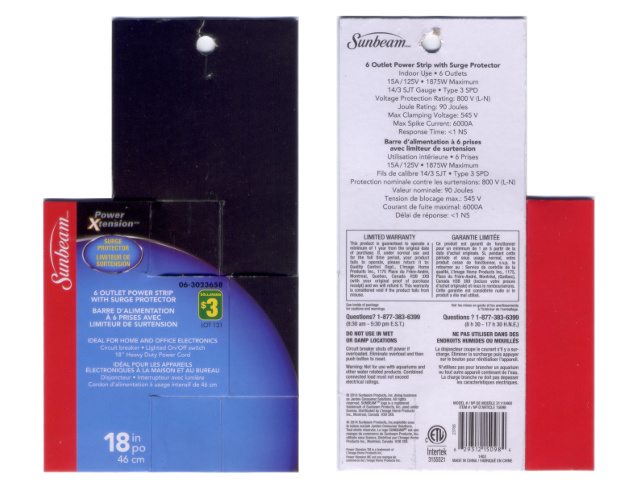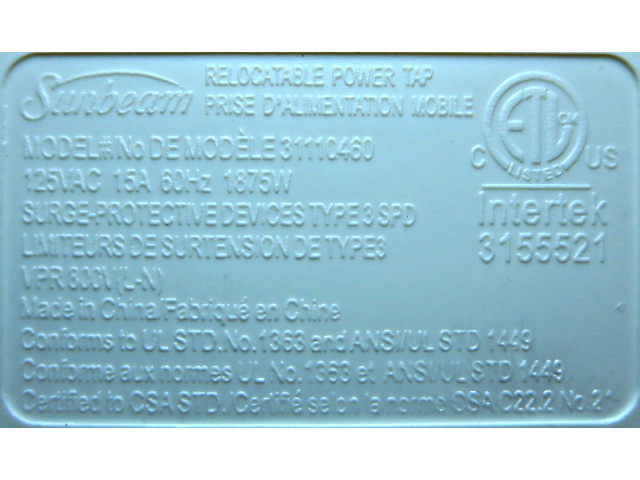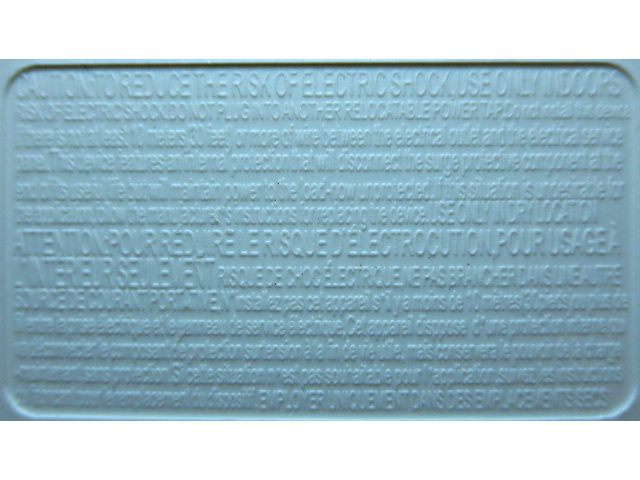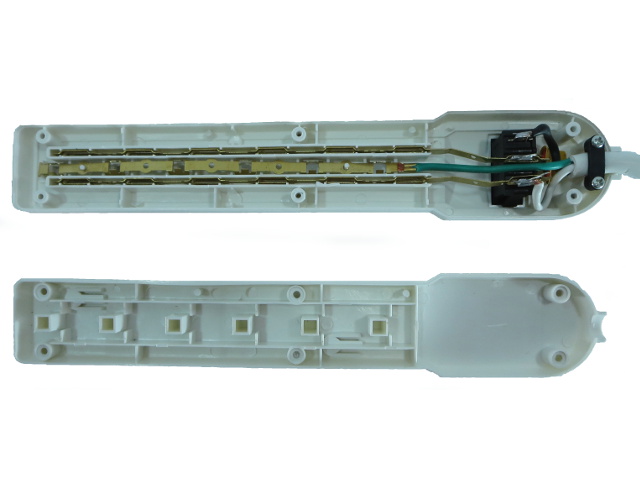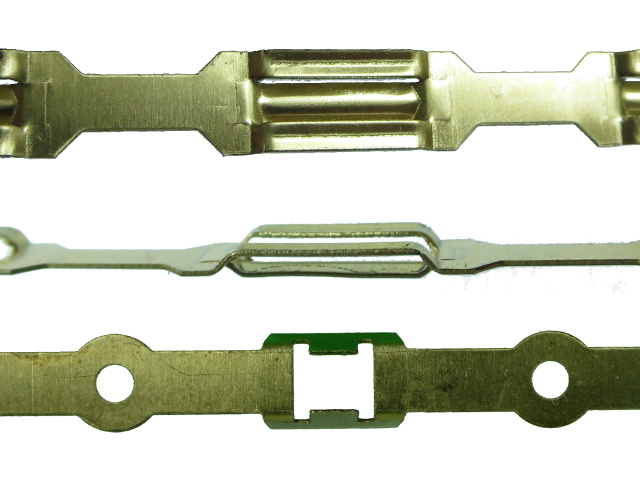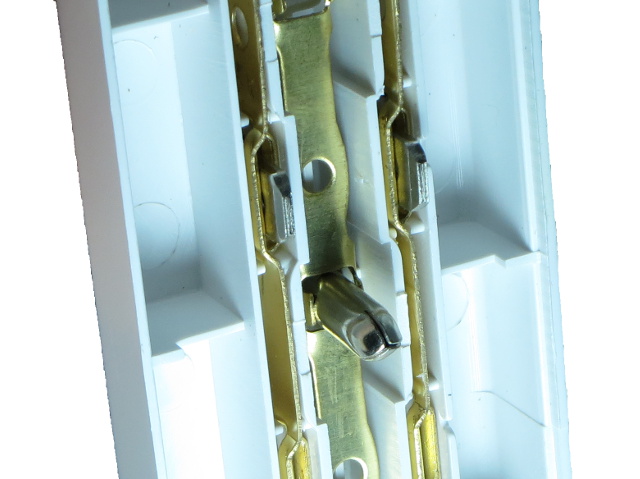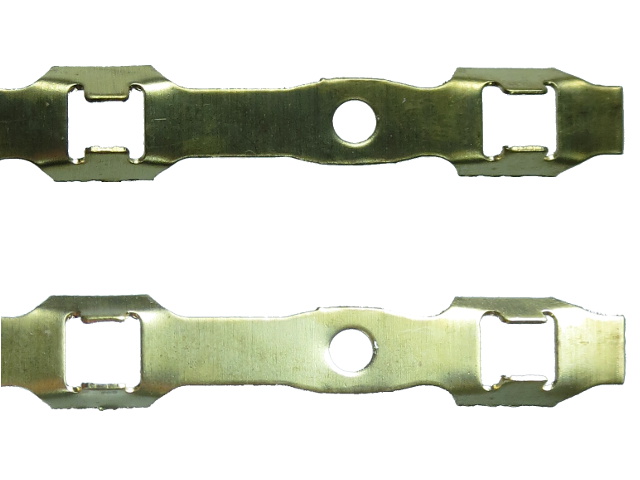Let's Take a Trip Inside Low-Cost Power Bars, Part One
Let's Take a Trip Inside Budget Power Bars, Part One
Readers asked for it in August's SurgeArrest tear-down comments and here it is: a mini round-up and tear-down of bars ranging from $3 dollar-store specials to $15 big-brand varieties.
The Hoard
In order to get a somewhat representative sample of what is out there, I assembled a mess of nine power bars that should hopefully cover the whole quality range from potentially dangerous to very good (within reason considering the budget) in the neighborhood of $10. Since this is a lot of bars to cover in one shot, this first part will cover four locally-bought generic units.
Future parts will cover products from Kensington, Belkin, CyberPower, Tripp-Lite and APC, all of which we purchased from Newegg. Hopefully, that'll make curated sample conspirationists happy.
Round One: The Generics
As I was doing my shopping, checking to see which power bars I could find locally, it turned out most major-brand offerings were priced in excess of $15. So, after two passes, I settled for a mix of two of the cheapest bars I could find and a couple of more common brands:
- Sunbeam's Power Xtension, dollar store, $3
- Electro's EL-543, flea market, $8, sold as surplus
- Noma's no-name, hardware store, $15
- BlueDiamond's PowerPro, computer store, $15
Our First Contestant: Sunbeam Power Xtension
Coming from my local dollar-store, this $3 unit is the cheapest of the lot with a very short 46cm (18”) power cord. I doubt anyone will have particularly high expectations of it. But surprises can always pop up...for better or worse.
Sunbeam's Wrapper
There is not much to see on the packaging's front, aside from the 18” cord length, $3 price, number of outlets, mention of the lighted switch and presence of some form of surge protection inside.
The back-side provides some more details: we are told to expect 90 joules of surge suppression with an awfully high 800V line-neutral protection voltage and equally high 545V clamping voltage. When you consider that bulk input caps in universal power supplies are only rated for 400-450V, it seems likely that devices connected to this bar would instead be protecting it.
Get Tom's Hardware's best news and in-depth reviews, straight to your inbox.
Among the other details on the back is an Intertek ETL mark instead of the usual UL one. That got me curious, since I do not remember owning any equipment with an ETL mark before. I never really paid attention to those until now.
Sunbeam's Label
The main label does not tell us much that the packaging didn't already cover, but it does explicitly list which UL and other agencies' safety standards this bar is supposed to meet, complete with Intertek's ETL mark and file number. Searching Intertek's listings for 3155521 returned no result.
I am very much puzzled that their directory does not appear to be searchable by file number. I contacted Intertek through email to ask about this, was told they were unable to verify the product and that my inquiry was forwarded to field investigations. Not a good start.
Sunbeam's Wall-Of-Text
Here comes the typical warnings about using the bar indoors in dry locations only. Many of the products we're writing about, including this one, also state that the bar should not be used on outlets with less than 10m (30') of wiring to the electrical distribution panel, which may seem silly since very few people can even check that. This specification is actually part of the UL 1449 surge protection device (SPD) standard, meaning that the bars' surge protection rating is based on 10 meters worth of wiring between the surge simulator source and the outlet the device-under-test plugs into. Plug bars closer than that and they might not meet their spec.
The last bit of text I want to mention says that “This device features an internal protection that will disconnect surge protective device at the end of its useful life”. The reason for this is when MOVs fail, their leakage current may increase to the point where they can overheat and catch on fire. So, MOVs connected across live and neutral or ground must have a thermal shutoff fuse in series to cut off the ignition source, allowing flame retardants to put the fire out.
Inside The Sunbeam's Shadows
Lurking where the sun don't shine are the familiar stamped sheet metal outlet terminals seen in my previous tear-downs, a combination switch-breaker-illuminator and a small MOV hidden behind the bunched-up wires. Everything is soldered at the switch except the ground wire, which gets crimped to the ground strip.
At a glance, the MOV does not appear to have a thermal fuse attached to it. Although I could not find a free copy of UL 1449, third-party documents that leak fragments of it strongly indicate that such protection has been required at least since revision two. In any case, the wall-of-text on the previous slide explicitly states that this bar does have some form of end-of-life disconnect, so something should be there. We will take a closer look at that later.
Sunny Beams
Since this is the first unit in today's crop, and this bar's strips are easily whipped out, I am going to take a little extra time to look more closely at them.
The grounding strips are exactly the same basic design seen in my previous power bar tear-downs: stamped squares with a pair of flaps providing contact, which means we can expect some degree of deformation after a plug gets inserted.
For the live and neutral strips, we have simple sheets of stamped metal parted three ways with the middle section offset in the opposite direction from the other two, a rib stamped into each section to provide some extra stiffness and help guide plug prongs through so they do not catch the strips' edges.
The Sunbeam's power strips are 0.45mm thick and 4mm wide at the narrowest point. Its ground strip is 0.3mm thick and 4mm wide, which feels awfully flimsy. At less than two square millimeters worth of cross-section, the power strip has less metal than #14 wire. Combine that with the more resistive copper-nickel alloy and you can imagine how this is definitely not a heavy-duty power bar.
Coming Through
Before showing the aftermath on that poor ground strip, I thought some readers might be curious to see what a power strip's outlets look like from the other side with something plugged into them. This picture is actually from the Electro – I took it at a few different angles with a few bars, and just happened to get my cleanest image out of this one. If you were wondering, here is your answer! If you were not, you now have one more answer to a question you never asked.
Coming up next are the before-and-after shots.
Ground Strips: Sacrificing A Virgin
These were also taken from the Electro, since its grounding flaps were tighter than the Sunbeam's, making the deformation more evident. I could have put this slide in the EL's section, but because I expect this to be a common design across all specimens in this story (including the major brands'), I decided to put it up-front as well.
We can see that both tabs on the bottom-left position have been pushed out almost flush with the cut-out, and that the tips went from straight edges to somewhat bowed-out. The two tabs also look slightly skewed.
When you see a warning on a power bar reminding you not to daisy-chain them, this sort of wear on the metal strips is part of the reason: sufficient to provide ground and neutral for appliances, but not enough to guarantee sufficient continuity for downstream power taps. It would be interesting to measure how much of an effect insertion cycles have on the strips' contact performance, though that'd require a high-energy pulse generator and suitable measurement equipment.
-
qlum This article makes me wonder how well my own no brand power bars fare but I don't have the expertise to know what to look for when opening them and they probably look failry different from the US ones as well, at least they do on the outside. We use the german plugs here and also 230v is probably making a difference as well.Reply -
srap @qlum: I believe Tom's has a german branch, maybe we should ask them to do the same with europlugs.Reply -
Shin-san There has been several things I bought from Sunbeam, and I'll never buy from that company again (Sunbeam, Oster, Jarden, and Holmes). Their stuff simply doesn't last.Reply -
hp79 This article format really sucks. I click on "see more" just to see few more words.Reply
The article however is informative. Thanks for the write up. -
CaedenV @HP79Reply
Ya, the team that run's Tom's website really REALY sucks, the commenting section in IE sometimes doesn't show up, sometimes it shows up but you cannot do quotes, and sometimes you hit submit and it just gets lost in space. Clicking on a picture on any other website on the internet will take you to a larger or better quality picture, but on tom's the linked picture is often smaller/worse than the picture in the article. These kinds of picture+text articles are by far the worst though, offering minimal readability combined with smallish pictures. And we will not even get into how broken the Tom's charts are... it is just sad. And using Tom's without some sort of ad-blocking is an absolute nightmare! Tom's is the reason I use ad-blocking extensions in all of my browsers because it became such a hassle so early on.
But the content on Toms is often golden, and the data is both accurate and well explained. Not to mention that the community is amazing. It is more than worth putting up with a broken web page when the content is so good. -
Niccodemure Thank again. I am really looking forward to the name brands and hope they include Monster, PSaudio, Panamax, thurman, APC,Reply -
Flying-Q In the UK most power bars are unprotected, but there is a limit to the number of outlets you can expand from a single wall socket and most houses have been uprated to full RCCDs in the consumer unit supplying a ring main. Sadly, many people do not know of the 'max-4-expansions-per-socket' rule and 6-socket bars without protection are available to buy at hardware stores and supermarkets. That said, every UK plug must have a built-in wire fuse with 13A rating, or 5A or 1A depending upon the equipment.Reply -
Daniel Sauvageau Reply
This roundup was for sub-$15 power bars - all nine of them.14656840 said:Thank again. I am really looking forward to the name brands and hope they include Monster, PSaudio, Panamax, thurman, APC,
The goal was to show how much (or little) of a difference there is between inexpensive power bars with surge suppression ratings of some sort.
